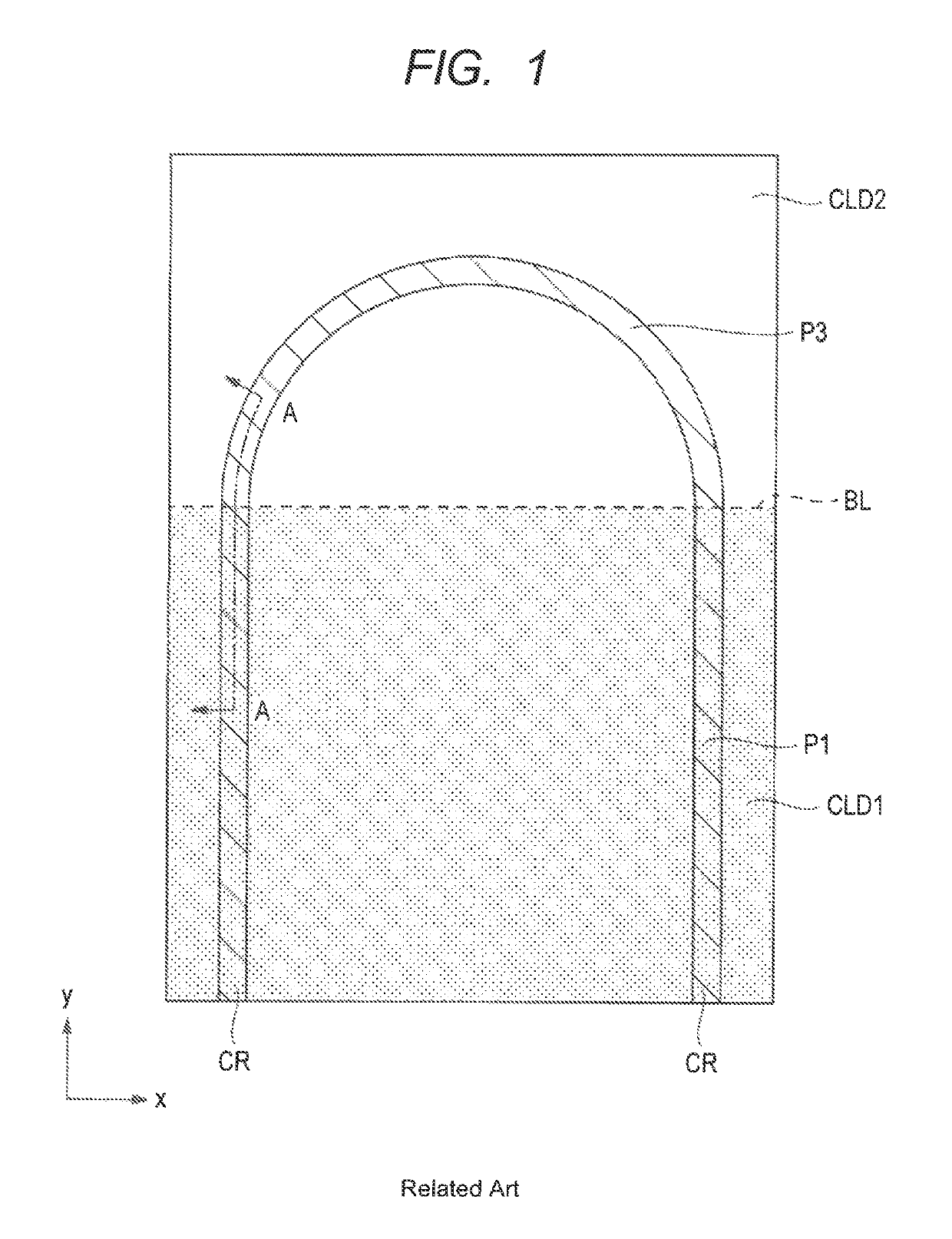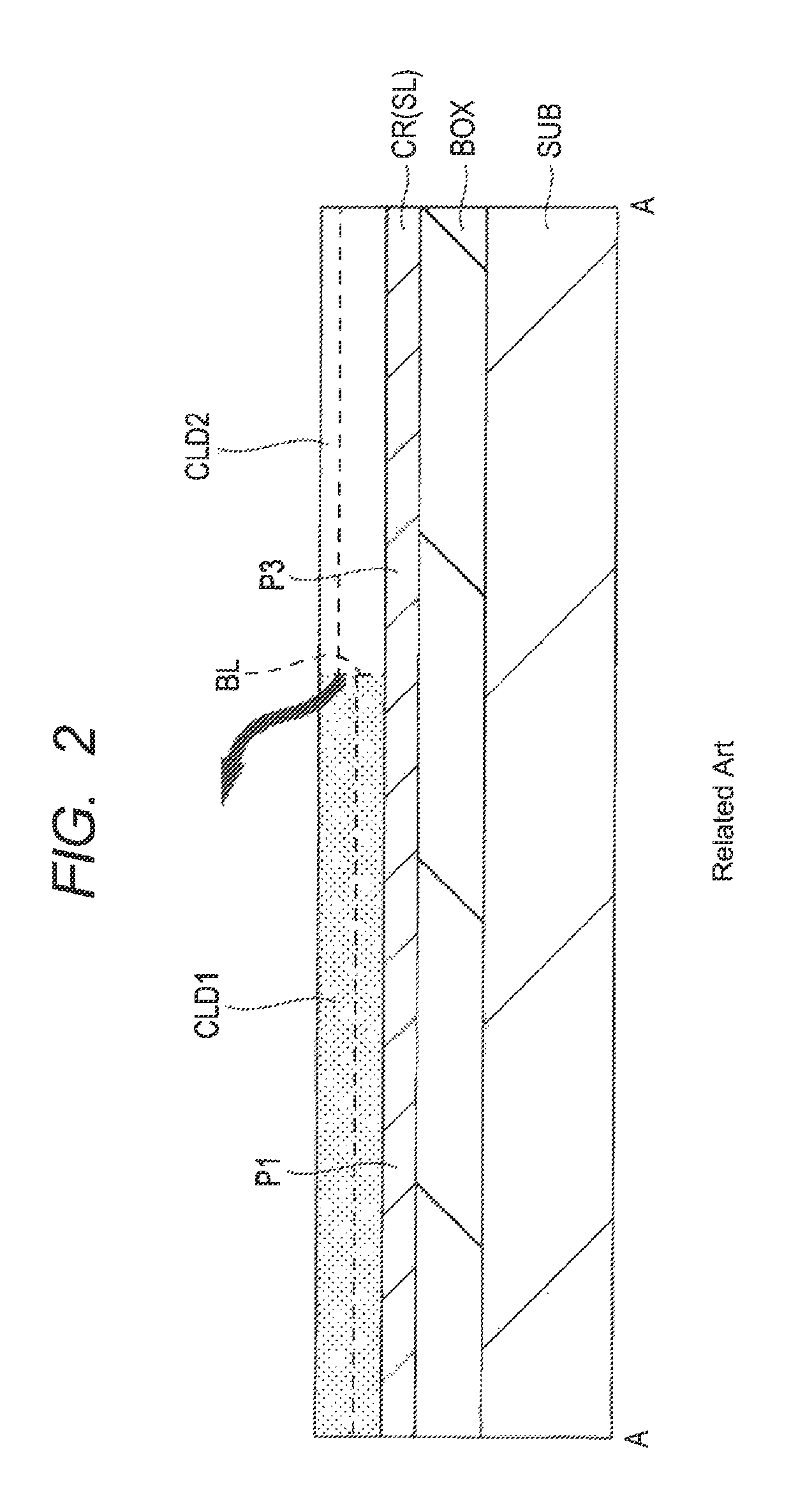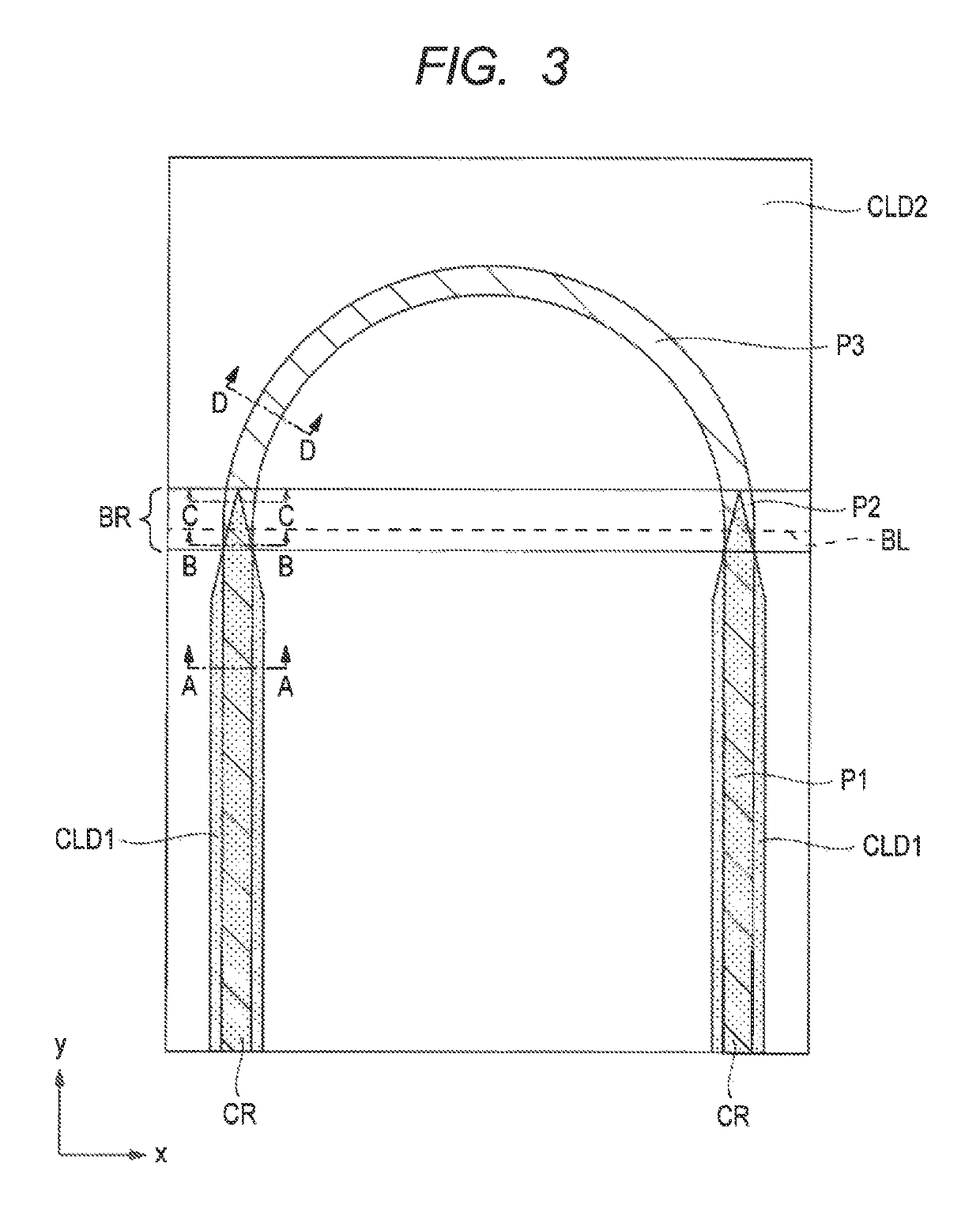Semiconductor device
a technology of semiconductors and devices, applied in the direction of instruments, optical waveguide light guides, optical light guides, etc., can solve the problems of increasing optical loss, /b> of the core layer cr is accompanied by manufacturing difficulties, and the optical loss is high. achieve the effect of low optical loss
- Summary
- Abstract
- Description
- Claims
- Application Information
AI Technical Summary
Benefits of technology
Problems solved by technology
Method used
Image
Examples
first embodiment
[0052]First, after description of the related art, room for improvement which the related art has will be described. A technical concept of First Embodiment for reducing the room for improvement of the related art will next be described.
[0053]FIG. 1 shows a schematic configuration of an optical waveguide of the related art. The optical waveguide of the related art shown in FIG. 1 has a core layer CR formed on a substrate (refer to FIG. 2 described later). As shown in FIG. 1, this core layer CR is comprised of a linear portion P1 extending in a y direction (first direction) and a curved portion P3 having a finite radius of curvature. In FIG. 1, a boundary line BL for discriminating the linear portion P1 from the curved portion P3 is shown. This means that in FIG. 1, the linear portion P1 of the core layer CR is present below the boundary line BL in this drawing and the curved portion P3 of the core layer CR is present above the boundary line BL on this drawing. As shown in FIG. 1, a ...
modification example 1
[0093]Modification Example 1 of First Embodiment will next be described. For example, in the optical waveguide of First Embodiment shown in FIG. 3, the boundary portion P2 of the core layer CR extends across the boundary line BL between the linear portion P1 of the core layer CR and the curved portion P3 of the core layer CR. The technical concept of First Embodiment is not limited to it but allows, for example, the boundary portion P2 of the core layer CR to be comprised of a portion extending below the boundary line BL of this drawing in the y direction (first direction), as shown in FIG. 8. In other words, the boundary portion P2 of the core layer CR may be comprised only of a portion of the linear portion P1. Alternatively, as shown in FIG. 9, the boundary portion P2 of the core layer CR may be comprised of a portion having a finite radius of curvature above the boundary line BL in this drawing. In short, the boundary portion P2 of the core layer CR may be comprised only of a po...
modification example 2
[0094]Modification Example 2 of First Embodiment will next be described. In First Embodiment shown in FIG. 3, the region which is below the boundary line BL in this drawing and is other than the region that covers the linear portion P1 of the core layer CR has therein not the clad layer CLD1 but the clad layer CLD2. This means that in First Embodiment, in plan view, the clad layer CLD1 covers only the linear portion P1 of the core layer CR and the vicinity thereof (for example, the oozing region of evanescent light). In other words, in First Embodiment, the core layer CR has two separated linear portions P1 formed on the support substrate SUB and two clad layers CLD1 separated from each other cover these two linear portions P1, respectively.
[0095]On the other hand, FIG. 10 shows a schematic configuration of an optical waveguide of Modification Example 2. In the optical waveguide of Modification Example 2 shown in FIG. 10, different from the optical waveguide of First Embodiment show...
PUM
 Login to View More
Login to View More Abstract
Description
Claims
Application Information
 Login to View More
Login to View More - R&D
- Intellectual Property
- Life Sciences
- Materials
- Tech Scout
- Unparalleled Data Quality
- Higher Quality Content
- 60% Fewer Hallucinations
Browse by: Latest US Patents, China's latest patents, Technical Efficacy Thesaurus, Application Domain, Technology Topic, Popular Technical Reports.
© 2025 PatSnap. All rights reserved.Legal|Privacy policy|Modern Slavery Act Transparency Statement|Sitemap|About US| Contact US: help@patsnap.com



